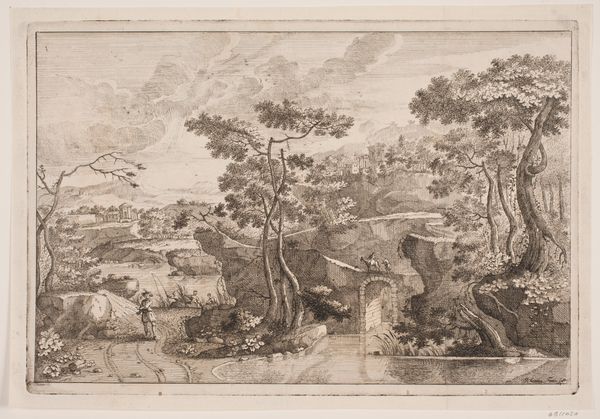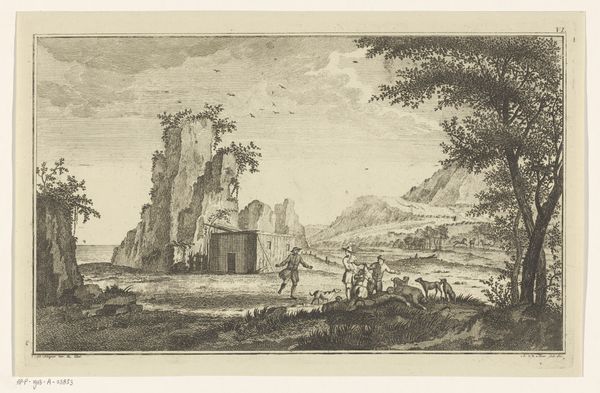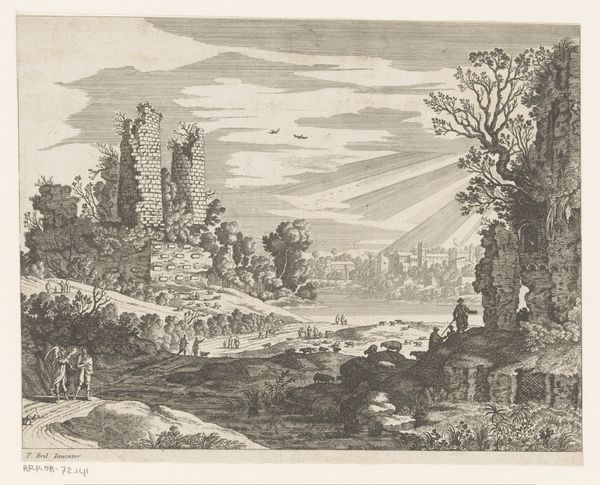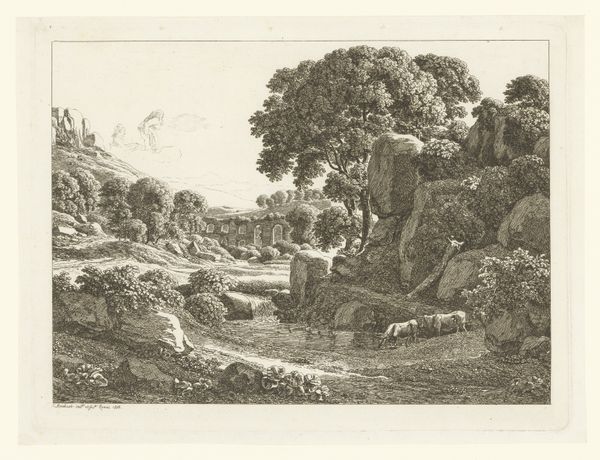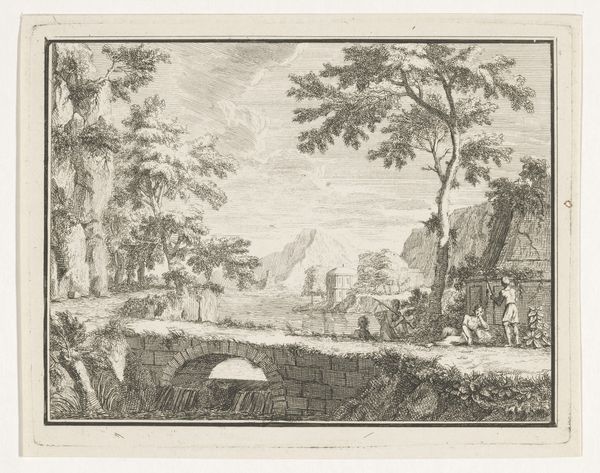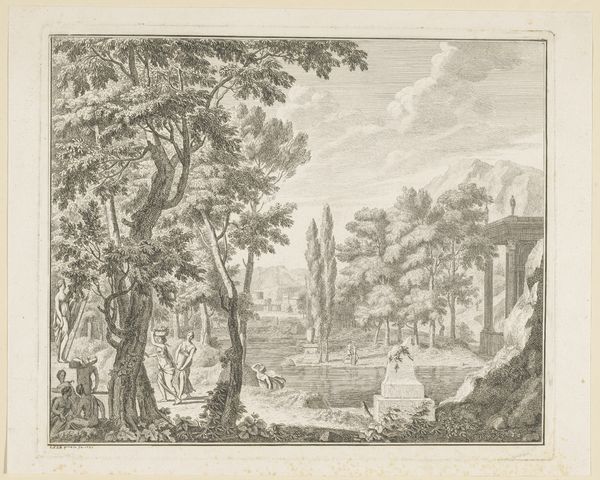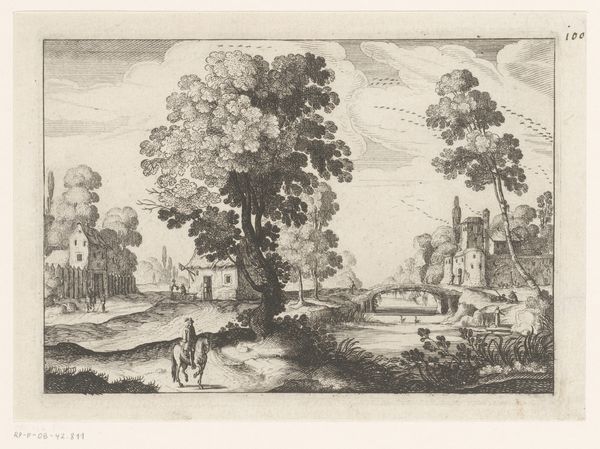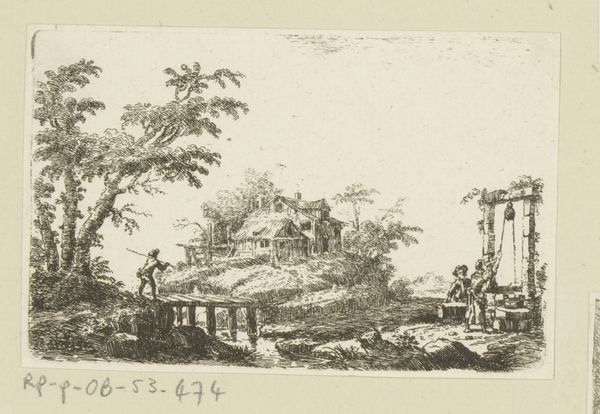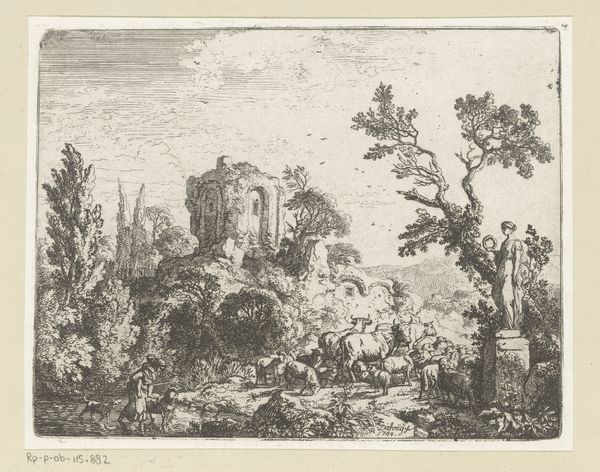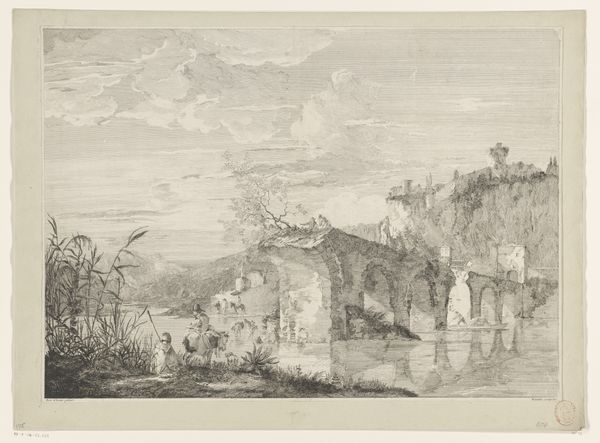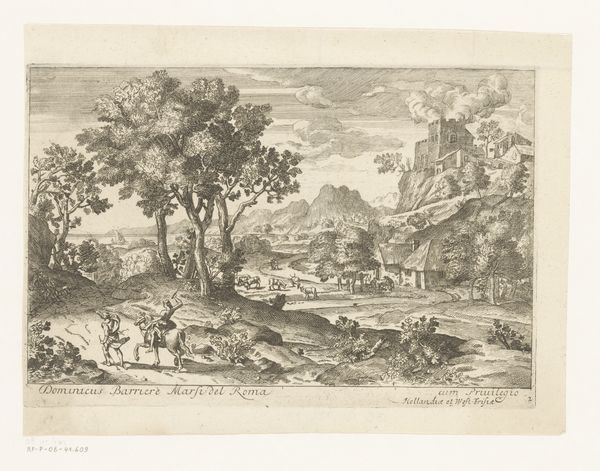
print, etching, intaglio, engraving
#
baroque
# print
#
etching
#
intaglio
#
landscape
#
line
#
engraving
#
realism
Dimensions: height 204 mm, width 296 mm, height 172 mm, width 251 mm
Copyright: Rijks Museum: Open Domain
Editor: We are looking at *Landscape with Ruins* from sometime between 1700 and 1730, an etching and engraving by Monogrammist MEG. The scene is quite detailed with figures and buildings, and feels very serene despite the ruinous structures. What strikes you about this piece? Curator: Primarily, I observe the artist's masterful manipulation of line and tone. Notice how the density and direction of the etched lines define form and create depth. The foreground exhibits darker, more concentrated lines, progressively lightening as our eyes move toward the background. This aerial perspective is cleverly achieved through purely formal means, establishing a clear recession into space. Editor: It’s interesting how much depth they achieve with just lines. How does the composition contribute? Curator: The composition is classically structured. The ruin on the right anchors the visual field, balanced by the suggestion of distant mountains on the left. The figures serve a dual purpose, providing scale and leading the eye deeper into the landscape. Observe, too, how the placement of the trees and clouds follows a similar pattern of controlled asymmetry, generating a harmonious and balanced whole. Is there any element that particularly grabs your attention? Editor: I hadn't really considered how deliberate the asymmetry was. I suppose the ruin drew my eye most strongly, because it has such complex shapes. Curator: Indeed. Now, contemplate the use of light and shadow – or, more precisely, the carefully orchestrated interplay of hatched and unhatched lines that approximate light and shadow. Consider the stark contrasts near the ruins versus the more muted transitions in the distance. This not only creates visual interest, but contributes to the overall spatial illusion. Editor: I see what you mean. Paying attention to the formal qualities has definitely deepened my understanding of how the image works as a whole. Curator: Precisely. Formal analysis reveals the intrinsic mechanisms through which the artist conveys meaning, irrespective of historical or cultural contexts. It’s a language of form, line, and light that speaks for itself.
Comments
No comments
Be the first to comment and join the conversation on the ultimate creative platform.
